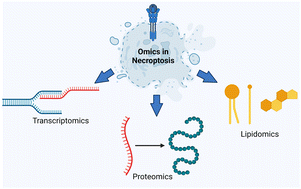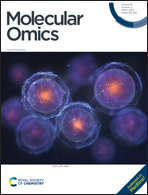Omics approaches to better understand the molecular mechanism of necroptosis and their translational implications
Abstract
Necroptosis is a type of programed cell death characterized by an inflammatory phenotype due to extensive membrane permeabilization and rupture. Initiation of necroptosis involves activation of tumor necrosis factor receptors by tumor necrosis factor alpha (TNFα) followed by coordinated activities of receptor-interacting protein kinases and mixed lineage kinase-like protein (MLKL). Subsequently, MLKL undergoes phosphorylation and translocates to the plasma membrane, leading to permeabilization. Such permeabilization results in the release of various cytokines and causes extensive inflammatory activity at the organismal level. This inflammatory activity is one of the major differences between apoptosis and necroptosis and links necroptosis to several human pathologies that exhibit inflammation, in addition to the ultimate cell death phenotype. Given the crosstalk between the activation of cell death pathway and inflammatory activity, approaches that provide insights on the regulation of transcripts, proteins and their processing at the global level have substantially improved our understanding of necroptosis and its involvement in different disease states. In this review, we highlight recent omic studies probing the transcriptome, proteome and lipidome which elucidate potential new mechanisms and signaling pathways during necroptosis and the necroptosis-associated inflammatory activity observed in various diseases. We specifically focus on studies investigating the transcriptome and intracellular and released proteome that contribute to inflammatory nature of necroptotic cells. We also highlight different lipids that have been implicated in necroptosis and lipidomic studies identifying lipid players in necroptosis. Finally, we review studies which suggest certain necroptosis-related genes as potential prognosis markers for different cancers and discuss their translational implications.



 Please wait while we load your content...
Please wait while we load your content...